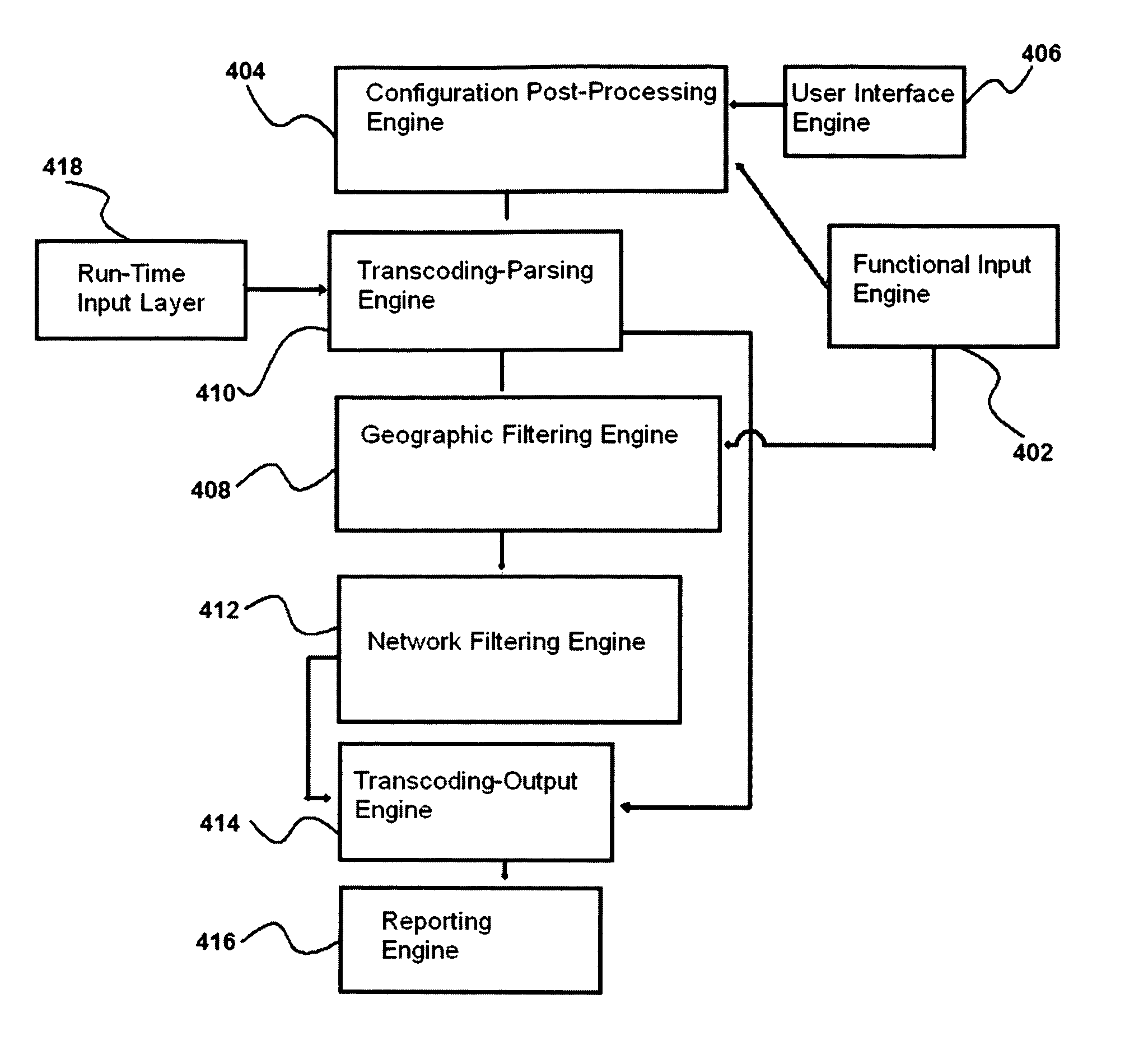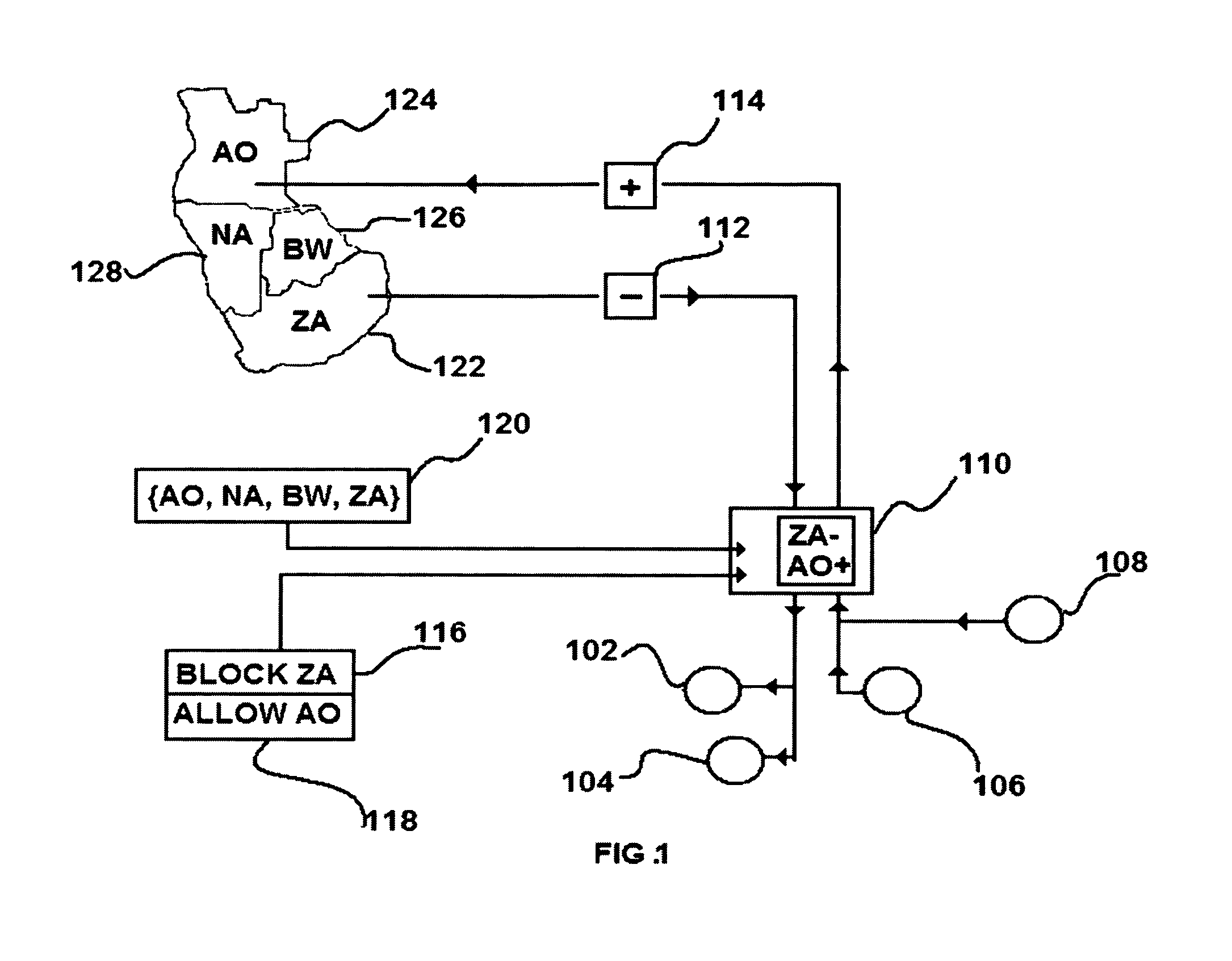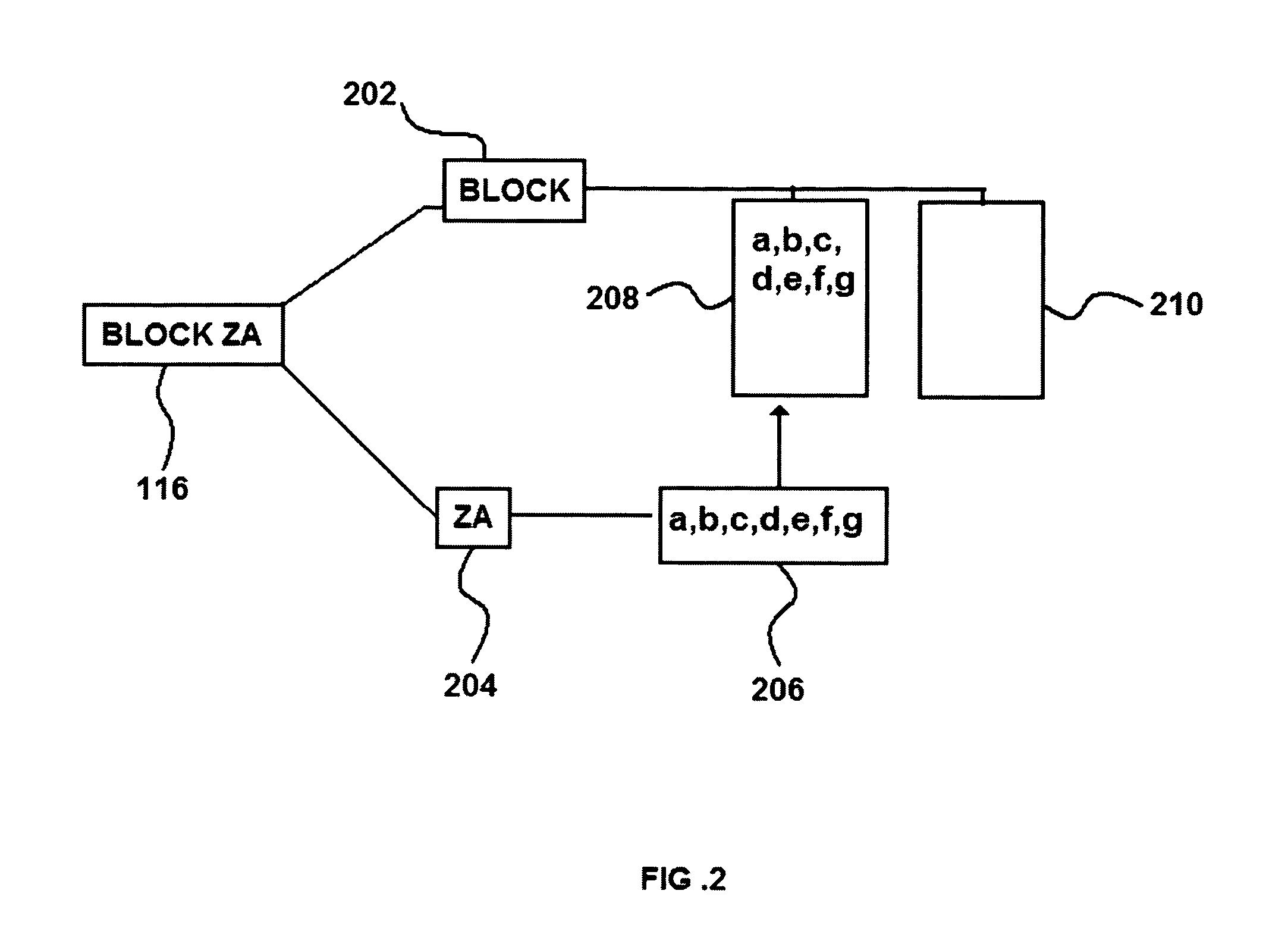Method and apparatus for geographically regulating inbound and outbound network communications
a network communication and geographical regulation technology, applied in the field of geographical regulation of inbound and outbound network communications, can solve the problems of inability to preemptively block or otherwise respond to network data packets in real time on the basis of geographic location, and the dependence of operation, etc., and achieve the effect of simpl
- Summary
- Abstract
- Description
- Claims
- Application Information
AI Technical Summary
Benefits of technology
Problems solved by technology
Method used
Image
Examples
Embodiment Construction
[0037]A detailed description is provided for a geographic filter device that implements processes of analyzing and conditionally responding on the basis of geographic associations of inbound and outbound network communications. The geographic filter device consists of a set of engines and modules which internalize functions for the following:
[0038]A set of configuration functions relating to input, input optimization, and communication of processed configuration directives to other functional groups, comprising: a means for receiving input from a user interface, and a means for optimizing said input by converting the configuration information into generic device instructions, a means of extracting configuration information or stored state information from a functional module exported to a storage media or transmitted between networked nodes, and outputting processed input to other functional groups. A set of input parsing and encoding functions for receiving, structuring, and produc...
PUM
 Login to View More
Login to View More Abstract
Description
Claims
Application Information
 Login to View More
Login to View More - R&D
- Intellectual Property
- Life Sciences
- Materials
- Tech Scout
- Unparalleled Data Quality
- Higher Quality Content
- 60% Fewer Hallucinations
Browse by: Latest US Patents, China's latest patents, Technical Efficacy Thesaurus, Application Domain, Technology Topic, Popular Technical Reports.
© 2025 PatSnap. All rights reserved.Legal|Privacy policy|Modern Slavery Act Transparency Statement|Sitemap|About US| Contact US: help@patsnap.com



